I woke up on the morning of December 9, 1980, to the sound of my older brother screaming. The night before in New York, John Lennon had been killed. As they told me years later, my parents considered waking my brother up to tell him the news. He was a huge Beatles fan; they decided it was better to let him sleep instead.
Only two weeks before, John and Yoko’s Double Fantasy had been released. It’s still difficult to listen to, a little traumatizing. I imagine a lot of people must feel the same way.
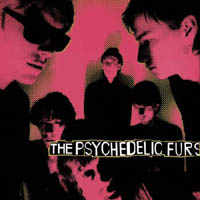
10. The Psychedelic Furs, The Psychedelic Furs
For all the music out there that’s ahead of its time, there’s even more that’s comfortingly late. This is how the first Psychedelic Furs album shows up—it makes you feel cool for even listening to it. It sounds hip and young, with hair that challenges the bourgeoisie. Is this that punk rock they’ve been talking about? Why yes, it could be! But without calling its cool too much into question, this album was a flash of something very unexpected in 1980.
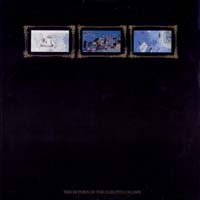
9. The Durutti Column, The Return of the Durutti Column
The Durutti Column is unfortunately known less for what they (“he,” actually, guitarist Vini Reilly) sound like than for this album’s sleeve, which was constructed entirely out of sandpaper. (That’s not the same edition pictured). The joke being that if you put it in your record collection, it scratches up the records next to it—one of which, presumably, would have been the next Durutti Column album? Unless nobody was expecting there to be one? That’s a subtly upsetting message to get from your label.

8. The Teardrop Explodes, Kilimanjaro
Liverpool’s the Teardrop Explodes holds a mythical status in the pop world, and as is so often the case with pop myths, it’s because of who they hung out with: Before forming the Teardrop Explodes, lead singer Julian Cope started a band with Ian McCulloch, later of Echo & the Bunnymen. The myth of the Teardrop Explodes has perpetuated because for years their music was practically impossible to find; one of the band’s contemporaries, the Freshies, even had a song about it: “I Can’t Get Bouncing Babies by the Teardrop Explodes.” But the first day I had Napster I typed in “Teardrop Explodes,” and (finally) hit a goldmine.
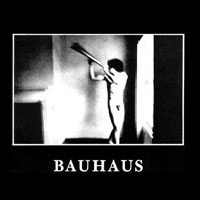
7. Bauhaus, In the Flat Field
Bauhaus’s first mistake was hauling coffins on stage for lead singer Peter Murphy to rise from to sing “Bela Lugosi’s Dead.” Their second mistake was putting a fuzzy photo of a fellow with his belfry out on the cover of their first album. It says a great deal about how exceptional their music is, to have put their fans through all this embarrassment for so long. Those T-shirts were a badge of honor; at least, they were a badge of something.
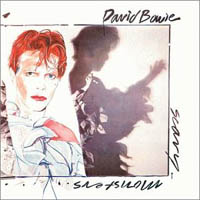
6. David Bowie, Scary Monsters (and Super Creeps)
Bowie emerged from his “Berlin trilogy” of recordings—a series of experimental collaborations with Brian Eno—with renewed energy and inspiration, and possibly some yacht bills. Scary Monsters is, as they say, “a more focused effort,” and boatloads more commercially viable than his previous three albums. Where Low, “Heroes,” and Lodger were edgy, Scary Monsters’ sharp corners have been sanded down; here, musical experimentation is in full practice. The result was not simply one-off crossover success for Bowie, but a radio-friendly path that countless acts would follow throughout the decade, synthesizers in tow.
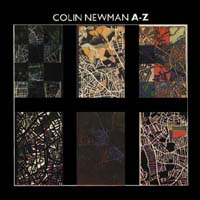
5. Colin Newman, A-Z
An Amazon reviewer warns of the first album from Wire’s lead singer: “Fellow music lover trying to save someone else’s dime. I searched to find that cool song, ‘Alone,’ from Silence of the Lambs, and I thought that I found the correct version. I was wrong, this is NOT the version from the movie… As a stand alone CD, I didn’t like it. I do like groups like the Cure, especially Mixed Up… If someone finds the correct version, leave a review so that other lovers of ‘that cool song’ can buy it for themselves.” And gets a response: “This is indeed the album that contains the track ‘Alone’ from Silence of the Lambs… The sound quality of the song when used in the film is a little odd—some kind of echo and weird equalization was used… It should also be noted that it is NOT the song that many people look for from this film—the dancing-in-the-mirror song where he films himself with the ‘flyin flyin’ flyin’ over you’ lyric—that is ‘Goodbye Horses’ by Q. Lazzarus… As for the rest of A-Z, absolutely outstanding. Highly recommended.”
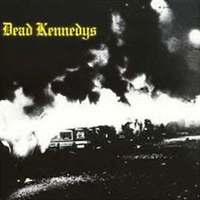
4. Dead Kennedys, Fresh Fruit for Rotting Vegetables
Dead Kennedys were that guy in high school who smoked pot in the hall and didn’t go to class anymore because he’d already been accepted to some college in Oregon where you didn’t have to wear a shirt to class (girls too!) and you graded yourself at the end of the term. Dead Kennedys were also that other guy in high school who sat in front of you and wrote manifestos instead of listening to the teacher because he was going to skip tomorrow since he’d decided the only way to effect real social change was to work at the homeless shelter downtown instead of sitting in a room solving quadratic equations. These guys were dangerous for all the right reasons.
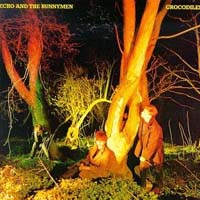
3. Echo & the Bunnymen, Crocodiles
Like most Americans, everything I know about Echo & the Bunnymen I learned from the “Notes” sections of Sire Records CD inserts. Liverpool! (We’ve heard of that!) Replaced their drum machine with a real person! (Authentic!) Psychedelia! (What!) Hold on there—psychedelic? Psychedelic is the Beatles and Pink Floyd. It’s the ‘60s and little round glasses. What is all this? Wait a minute…
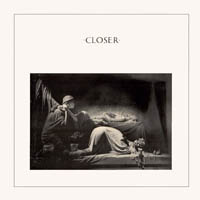
2. Joy Division, Closer
On May 18, 1980, Ian Curtis, Joy Division’s lead singer, committed suicide and became a music legend. For decades this tragic fact has defined the band’s legacy—that, and that New Order would eventually form out of all this mess. Of Joy Division’s only two studio albums, I prefer this one to the previous year’s Unknown Pleasures. Despite the history of the album (it was released two months after Curtis’s death), despite the gloom of the album’s cover (it was completed months before the suicide), Closer is a downright chirpy album, and portends some of New Order’s excellent, later work. Still—what if, what if, what if.
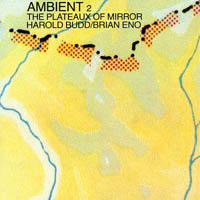
Album of the Year: Harold Budd/Brian Eno, The Plateaux of Mirror
This is the big deal. Just like battling to the end of Gravity’s Rainbow or scratching your head all the way through Wild at Heart, there’s a reason why you’re supposed to care about certain artists and their work. And while Music for Airports, the first installment of Eno’s “Ambient” series, delivered new electronic landscapes, there’s still the nagging sense there should have been more, that something was missing.
And there was—with this album, composer Harold Budd introduced an assured (and minimal) melodic structure to Eno’s ambient textures. The album they recorded is, to this day, still the most beautiful music I’ve ever heard. Hands down, nothing comes close; nothing has ever been quite as transporting, as capable of erasing the line between what you’re hearing and feeling. Only the hiss of the tape and a spare, flawed note remind you people are behind the controls.

